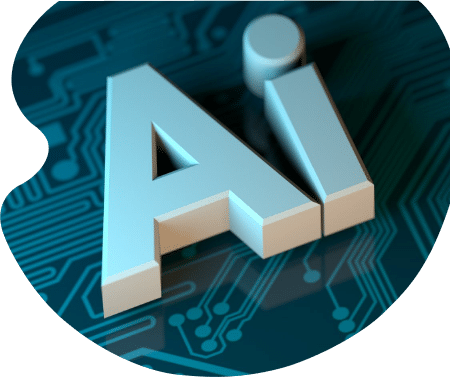Imagine a large financial institution facing a sophisticated cyberattack. Instead of spending many hours on human analysis to understand and mitigate the danger, an AI-powered security system can swiftly identify the anomaly, analyze the threat in real time, and neutralize it before any significant damage can be done.
This is how AI can transform the cybersecurity landscape in 2024.
In recent years, the adoption of artificial intelligence (AI) in cybersecurity has increased. From a market valuation of over $10 billion in 2020, AI in cybersecurity is likely to reach $46.3 billion by 2027, growing at a compound annual growth rate (CAGR) of 25.51%. With 69% of organizations considering AI essential for responding to cyberattacks, the business world increasingly relies on it to protect cyber assets.
HOW AI WILL SHAPE FUTURE CYBERSECURITY STRATEGIES
Here are eight ways the increasing investment and reliance on AI will shape future cybersecurity strategies.
1. Impacting Compliance
As the use of AI in cybersecurity grows, its ability to process large volumes of data also grows. Strict privacy laws like the GDPR in Europe and the CCPA in the USA create challenges for companies. With 90% of people concerned about data privacy and 72% finding existing regulations inadequate, governments and regulatory agencies are now formulating new guidelines for AI’s use in cybersecurity.
Under these new regulations, organizations should proactively collect and analyze threats that could affect them, ranging from cyberattacks on chat platforms to geopolitical issues and international conflicts. Instead of focusing solely on risk assessments, companies must take a broader approach to identify threats and craft strategies to address or prevent them.
2. Expanding Across Sectors
AI’s use in cybersecurity has expanded across multiple sectors, and leaders should expect this trend to continue. Industries that have experienced significant increases in cyber-attacks in recent years include banking, with a 238% increase in cyberattacks over the past five years, and healthcare, where the number of cyberattacks in the sector rose by 74% in 2022.
As businesses continue to face unprecedented cyber threats, cybersecurity becomes critical. AI’s role in threat detection and response is vital for robust cybersecurity strategies.
3. Enhancing Threat Detection And Response
As AI becomes more entrenched in cybersecurity, its role evolves. It currently includes threat detection, predictive analytics, and response mechanisms. Approximately 51% of businesses use it for threat detection, 34% for predicting potential security incidents, and 18% for response mechanisms.
However, technological advancements in AI will continuously lead to more sophisticated tools, capable of analyzing complex datasets and effectively countering advanced cyber threats. Integrating AI into threat management shows its growing importance in proactive, predictive cybersecurity strategies.
4. Increasing AI And Machine Learning Spend
The trend of increased investment in AI and machine learning for cybersecurity is becoming more pronounced, with 71% of organizations now allocating more budget to these technologies than just two years ago. This growing financial commitment recognizes the benefits AI and machine learning bring to cybersecurity.
These technologies enhance security measures while introducing innovative approaches and greater accuracy in threat detection, predictive analytics, and response strategies. As cyber threats become more complex, reliance on AI and machine learning is expected to grow and drive further advancements and budget allocations.
5. Advancing Technological Innovations
Continuous advancements in AI technology have led to more sophisticated and effective cybersecurity tools. Quantum computing is one of the most significant emerging technologies. It offers superior processing power that enables AI systems to analyze and react to cyber threats faster and more efficiently.
Additionally, developments in areas like natural language processing and predictive analytics enable AI systems to anticipate and neutralize potential threats more accurately. AI-driven cybersecurity tools can learn from past incidents, improving their response strategies. This adaptability ensures cybersecurity measures remain robust against evolving cyber threats.

